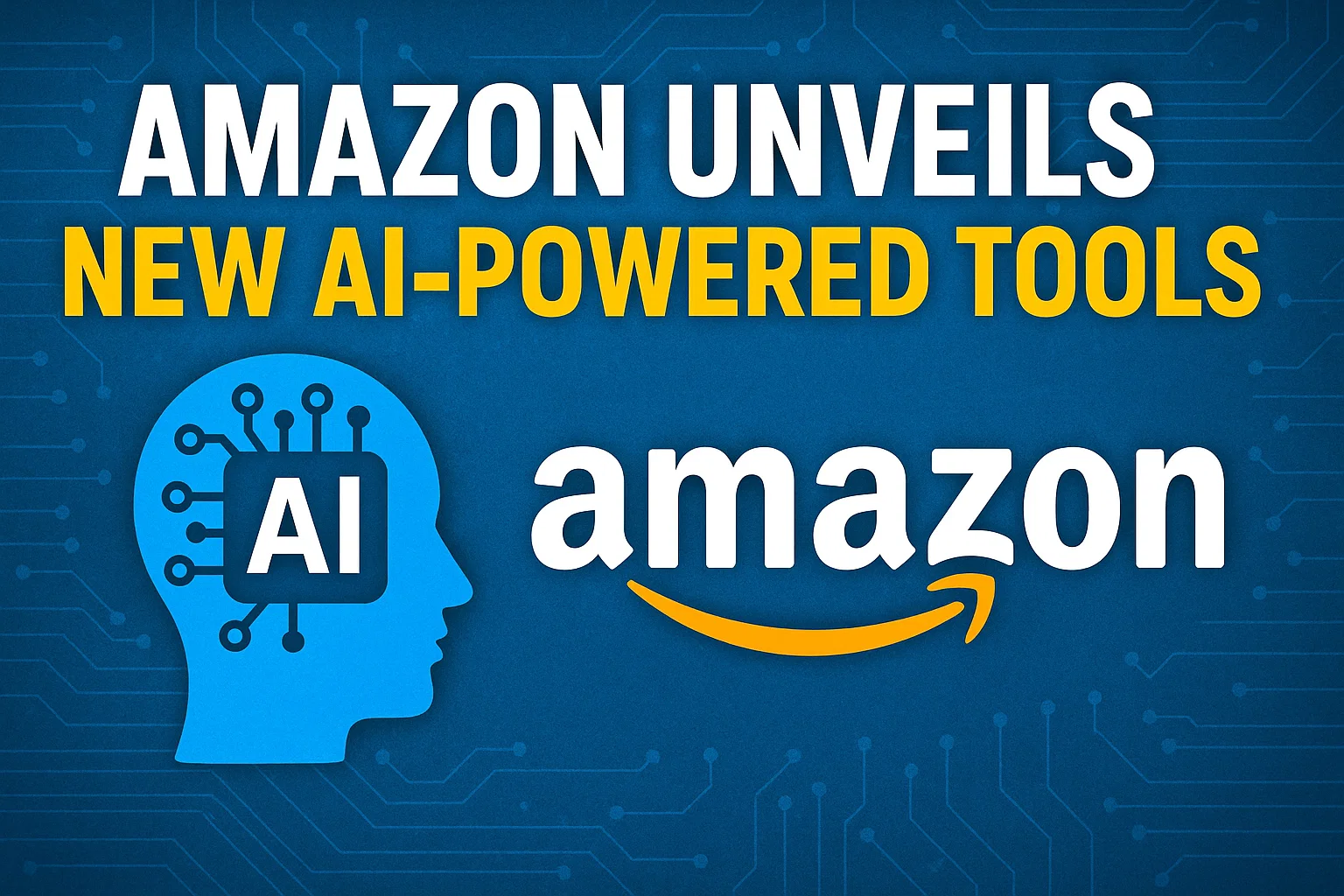Amazon Bets on AI to Help Sellers Launch Faster, Cheaper, and With Less Risk

Seattle, Sept. 18, 2025 — At its annual Accelerate conference for sellers, Amazon unveiled a suite of new AI-powered tools that aim to reduce the guesswork behind launching products on its marketplace. The rollout signals not just an upgrade in seller support, but a deeper bet on agentic AI — software that doesn’t just analyze but acts like a partner in managing business decisions.
The Problem Amazon Wants to Solve
Launching a new product on Amazon has always been risky. Sellers must often commit thousands of dollars in inventory and wait weeks — sometimes months — to see whether customers bite. Reviews, the lifeblood of early sales momentum, arrive too slowly. And identifying which features or price points matter most can feel like a game of trial and error.
For small businesses, these hurdles can stall growth. For Amazon, they mean fewer fresh products to entice shoppers. The new tools announced this week are Amazon’s attempt to streamline this early product journey — promising faster signals, lower upfront costs, and richer feedback.
Also Read: What Is the Nano Banana AI? Safety, Viral Saree Trends, and Couple Prompts Explained
What’s New in the Seller Toolkit
The headline changes include:
- AI-Powered Opportunity Explorer: Instead of raw signals like search volume, the tool now translates billions of customer clicks and searches into clear recommendations. It identifies unmet demand, highlights niche categories, and suggests the features or price ranges customers expect.
- Regional Inventory Launches: Sellers can test new products in one region, such as the U.S. Northeast, instead of shipping nationwide from day one. That means lower inventory costs while still offering Prime-level delivery speeds in that market.
- Enhanced Vine Program: Products can now be enrolled in Amazon’s reviewer network as soon as they enter Fulfillment by Amazon (FBA). Expanded reviewer pools and category-specific matches mean sellers get photos, videos, and credible reviews faster — sometimes even on day one.
- Shoppable A+ Content: Branded product pages get an upgrade, with carousels and visuals now directly tied to “Add to Cart” buttons. Amazon wants sellers’ storytelling to convert directly into sales.
- Product Performance Spotlight: This new AI coach benchmarks launches against similar products and alerts sellers to issues like low inventory or underperforming ads before they spiral.
- Seller Assistant (Agentic AI): Powered by Amazon Bedrock, this always-on assistant aims to help sellers manage listings, optimize performance, and even suggest next steps proactively.
Amazon’s Perspective
Mary Beth Westmoreland, Amazon’s VP of Worldwide Selling Partner Experience, framed the changes as a way to cut risk for entrepreneurs: “We want to help reduce guesswork and risk for sellers while furthering the growth of amazing new products,” she said.
CEO Andy Jassy, speaking at the event, called the seller partnership the most “substantial collaboration in the history of retail.”
His message was clear: Amazon isn’t just a storefront; it’s building the infrastructure for independent sellers to succeed faster and cheaper. [Source: Innovation at Amazon]
Why It Matters
Here’s where the story moves beyond the press release:
- For small sellers: The combination of regional launches and early Vine reviews could dramatically lower the entry barrier. Entrepreneurs no longer need nationwide inventory to test ideas, and credible reviews could land on day one instead of month three.
- For established brands: Shoppable A+ content and real-time coaching will resonate most. Brands that already have a following can now turn their rich product storytelling into direct conversions without relying solely on ads.
- For Amazon itself: This is about defending its marketplace edge. Rivals like Shopify offer merchants independence, while Walmart Marketplace and TikTok Shop are competing on price and social commerce. By embedding AI into every step of the seller journey, Amazon is doubling down on its strength: scale combined with speed.
The Journalist’s Lens
From my perspective, this rollout underscores a larger trend: AI is moving from backend optimization to front-end partnership. Sellers are not just being handed data but actionable insights, even nudges on what to do next.
Yet, there are risks. Over-reliance on AI recommendations could lead to homogenized products. If every seller chases the same “AI-identified niche,” variety might actually shrink. There’s also the question of data opacity: sellers are being asked to trust Amazon’s interpretation of billions of interactions without seeing the raw signals themselves.
Still, the upside is hard to ignore. If these tools deliver, they could reduce the infamous “chicken-and-egg” problem of new product launches — no reviews without sales, no sales without reviews. Amazon is trying to break that loop.
Must Read: Augment Me Debuts WotNow?!, an AI Agent Aimed at Fixing the Focus Crisis
Industry Context
Amazon’s move comes amid a broader wave of AI integration in e-commerce:
- Shopify has embedded AI into product descriptions and marketing copy.
- Walmart is experimenting with predictive demand tools to guide supplier decisions.
- TikTok Shop leans on algorithmic discovery to surface new sellers to buyers in real time.
What Amazon is doing differently is tying AI into logistics, reviews, and conversion tools simultaneously — a full-stack approach that smaller rivals can’t yet replicate.
What Comes Next
If the tools gain adoption, expect Amazon to:
- Expand regional launches globally, allowing sellers to test in Europe or Asia with localized logistics.
- Tighten integration of AI coaching with advertising, potentially auto-adjusting campaigns.
- Use shoppable A+ content as a testing ground for more immersive, interactive shopping experiences.
The bigger question: will sellers trust Amazon’s AI enough to let it guide product strategy?
For small entrepreneurs, the lure of lower costs and faster traction may outweigh skepticism.
For large brands, adoption will hinge on how transparent and accurate these tools prove to be.
Whether this creates more diversity in products or just a new wave of AI-influenced sameness will be the test.
For now, though, Amazon has made a clear statement: the future of launching products on its platform is AI-first.
